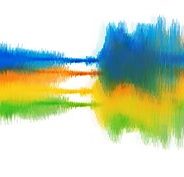Tuning
Thinking about indeterminacy is very difficult, at least for me. It’s as if my brain were “tuned,” like a piano, in particular ways, probably to the grammar and syntax and even the semantics of English. That’s my reality. However partial and ephemeral, music seems like the best and may be the only opportunity to get out of that, into another reality — or just to the point where you can begin to see, or hear the one you’re ordinarily in. Today I’m listening to La Monte Young’s improvisation, The Well-Tuned Piano — expected to last somewhere between five and six hours. Young doesn’t consider it finished, either. The recording I’m hearing is a performance from 1987, broadcast on BBC3 years ago. Young tuned the piano in a way he didn’t want to divulge, but someone (Gann) listened and, with assistance from a synthesizer, worked it out. Young eventually confirmed it. It’s called just tuning.
Tuning is a convention, imposed on the piano — another great structural convention that demands a fixed order. It could be said of any musical instrument but may be especially clear with piano. Instruments physically manipulate sound, the fundamentally indeterminate physics of vibrations, to produce structures audible, pleasurable, meaningful to human beings. The conventions are strong. Tuned in an unfamiliar way, a piano opens on to a different reality.






